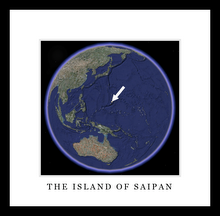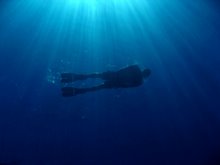
Over the past few years I have received a number of requests, mostly by graduate students or researchers, for copies of my Master's thesis which is titled, "IDENTIFYING AND UNDERSTANDING RESOURCE USERS OF PANAMA’S COIBA NATIONAL PARK". Just today I received a request from a student at the Graduate School of Kuroshio Science, Kochi University, Japan. It's amazing how far reaching one study can be and how the internet connects people so easily! I am posting this link so that in the future anybody interested can download this PDF of my thesis.
DOWNLOAD FILE
I conducted this research during the summer of 2001. Working with the Smithsonian Tropical Research Institute (STRI) was a really amazing opportunity I had while in graduate school at Duke University. It was early in the Spring of 2001 and I still hadn't solidified a topic yet for my master's research, though I knew I wanted to do work on Marine Protected Areas. I attended a lecture one afternoon being given by Dr. Todd Capson of STRI. Though his topic was on terrestrial conservation, I attended anyways just to hear his talk. Afterwards, I went up to him and on a whim asked, "So, do you do any marine research that is like the work you presented today?" His eyes lit up and he began to tell me about a "pet project" of his that had to do with a large marine protected area on the Pacific coast of Panama. And that's how it all began! A random question after a random presentation I attended. I've always been a believer that you never know where life is going to take you. And that day it took me to Panama.

So I spent over three months that summer designing and implementing a social science research survey in fishing villages all over the west coast of Panama. Here's a map of where I worked.

If you can read the city names, I interviewed fishermen from Puerto Armuelles in the west to Mariato in the east. My research question boiled down to this: Who are the people who fish or otherwise utilize the area in and around this large marine protected area? So I got to travel up and down the coast all summer long, walking into large towns and tiny villages, walking up to total strangers, asking where I could find and talk to fishermen. I met some really amazing people during my travels.

I remember one fisherman in particular who lived in the tiny island village of Bahia Honda, which you can see in the inset on the map next to Pixvae. The only way to get there was by boat. And there was no public boat or ferry to take you there. You just had to ask around to see when a boat was going. So I happened to catch a ride on the boat of this fishermen. When I arrived in the village, he told me I could stay in his house. What I hadn't realized was that there was no hotel, no restaurants, of any kind in this tiny village! So he made room for me in his very simple cinder block house with no power, no windows. I even had a small bed and room to my own. There was no running water either, and no indoor bathroom. He showed me where the "bathroom" was. We walked outside and there was a small concrete block "room" with four walls and no roof. There was a large wooden door, but it had no hinges. So you just had to lift it up and slide it over when you went in or out. Inside was a large hole in the ground covered by a toilet. He told me this is where I could "shower", and then walked me across the square where there was a water pump. You had to prime the pump (the only one in the village), then fill a bucket with water, and carry the water over to the concrete bathroom. Then, as you stood there with your head poking out above the five-foot tall walls, you scooped the water from the bucket into a little cup that had a small hole in it that let the water flow out in a crude shower-like fashion. And that was that! It was at times like that when I would have flashbacks of growing up in California and complaining angrily that my sister had used up used up all the hot water in the shower! Had I only known how good I had things! I also remember on the first morning I woke up in that village, I was sitting in the house with that fisherman, his wife, and his little baby girl and the baby stood up from a crawl and took her first steps across kitchen floor.

This is a picture of my accomodations in a small village called Pixvae. The bottom left door is for the jail. The top left door with the cross on it is, appropriately, where the village priest lived. The bottom right was an office, and the top right was a small room with a single bed where visitors to the village could stay. You could see through the floorboards right into the room below.

This is a picture of a fisherman who caught a swordfish that was almost bigger than the hand carved canoe he was in. As we approached this village, we happened upon this small canoe that just hooked a fish with a hand-line. The man in the back was digging his paddle into the water to slow the boat down, while the man in the front was holding tight onto the line. The fish was dragging the canoe through the water. It looked like they had landed a big one, so we pulled up along side them to watch them bring it in.

As different as it might look on the outside, life's pretty much the same wherever you go in this world. I'll post up some of my pictures from Panama when I have time. It's stories and moments like those that really make traveling worthwhile. The most memorable and most enjoyable events always seem to be when you are completely out of your element experiencing life in a way that you never knew existed. I know I'll always have a friend and a place to stay if I ever wander back to that tiny little island village in Panama.






4 comments:
Sounds like an amazing adventure Moretti!
I'm so glad you wrote about this. I was actually wondering if you would :)
What a great experience (not only for research purposes, but for you.)
btw- I love the pics
I have added a link to your site from my Saipanuvian blog. I enjoy reading your stuff and enjoy the photos as well. Thanks.
Bruce
Interesting. And not all that different than some parts of the CNMI, where people can be very friendly and hospitable, and plumbing isn't always available. Outdoor/separate-room bathrooms and bucket showers, cold water only, used to be the norm here. Things have changed, though.
Nice blog.
Post a Comment